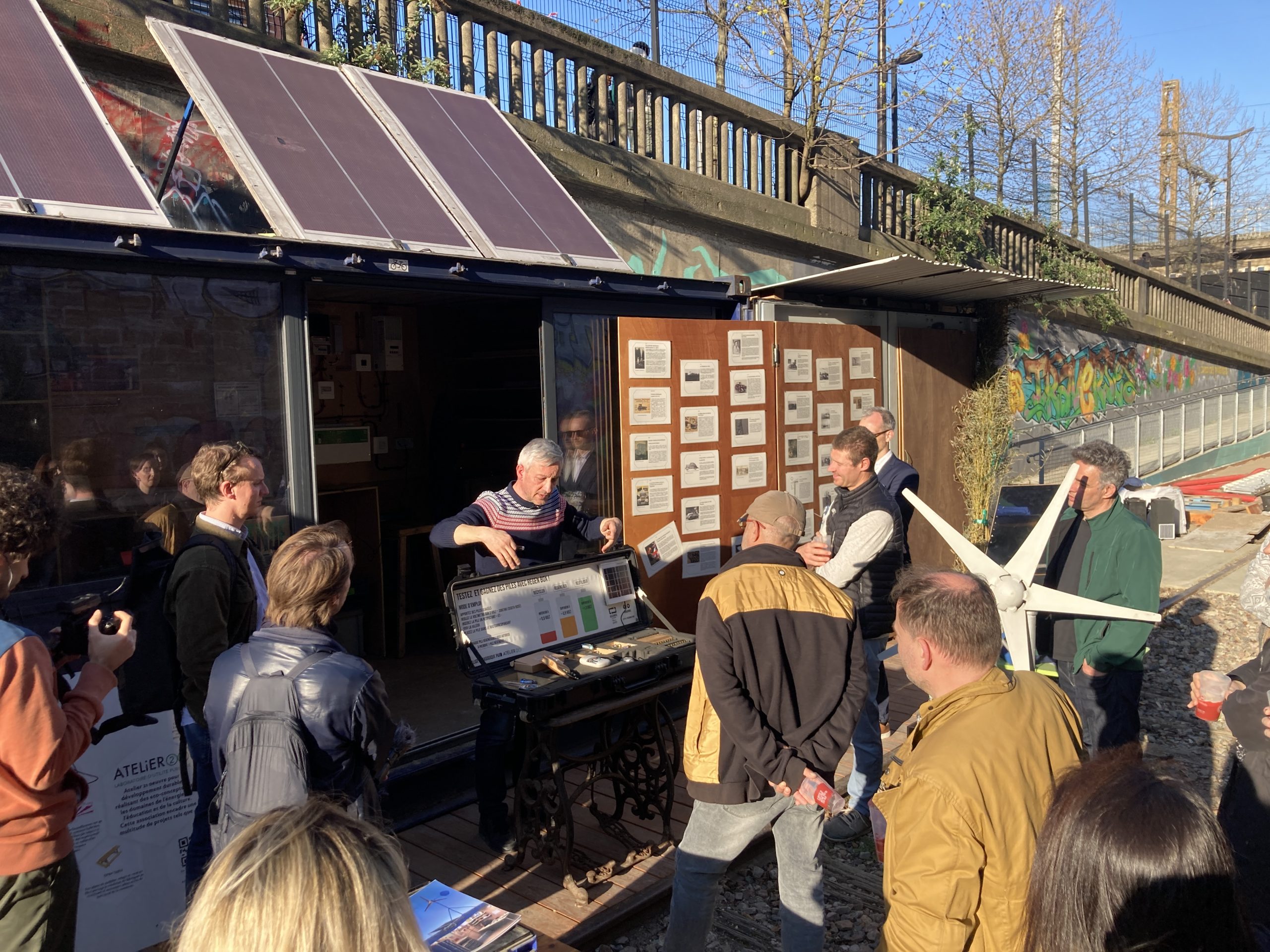Atelier 21 is a Paris-based ecological laboratory that explores new ways of engaging with energy, making it visible and accessible through hands-on learning, cultural projects, and inventive tools. Based in the Jardin des Traverses community garden in the city’s 18th district, its Ecolab offers a collaborative space where students, residents, and visitors can experiment with solar panels, wind turbines, and other renewable devices in a practical and playful setting.
We met Cedric Carles, French-Swiss artist, designer, and director of Atelier 21 at the Ecolab to talk about their unique approach. He shares how Atelier 21 has grown over the past 15 years into a hub for ecological innovation, blending research with community action and creative storytelling. From the globally touring Solar Sound System to the RegenBox battery revival project and the Paleo-Energetics research programme, they discuss how forgotten ideas and new technologies alike can inspire a more inclusive and imaginative energy transition.
What is the mission of Atelier 21?
Atelier 21 is a citizen-led ecological laboratory based in Paris, working to advance the energy transition by making energy visible, tangible, and accessible. We describe ourselves as generators of energy alternatives. For more than 15 years, we have carried out initiatives that combine research programmes, social actions, products and applications, and cultural activities.
For many, energy is abstract. It somehow works to power our remotes or cook our food. Our mission is to demystify energy in order to foster an inclusive and innovative energy transition.
What is the Ecolab?
At the heart of our work is our fab lab called Ecolab— located in Paris’s 18th district at Jardin des Traverses, an open garden along the Petite Ceinture, the former circular railway line. Situated amongst likeminded organisations and community members engaging in urban and agricultural experimentation, our ecolab and container school serves to support learning and collaboration as a mobile classroom and demonstration lab.
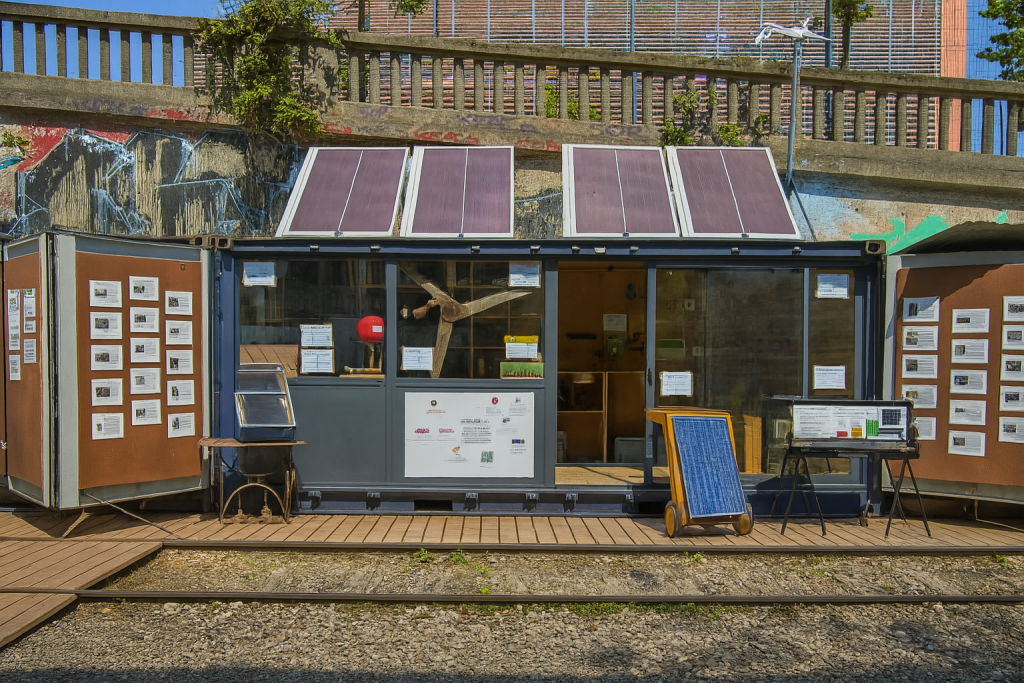
What makes the Ecolab unique in how you engage people with energy and innovation?
An important factor for the Ecolab and the container school is its diverse applicability and hands-on approach to innovation and learning. We host children, engineering students, locals, and community events in the surrounding garden. All activities are centered around energy, often solar energy, always with an overtone of play. We believe that the energy transition, in which solar energy is a leading variable, must go beyond the engineers and technical advancement.
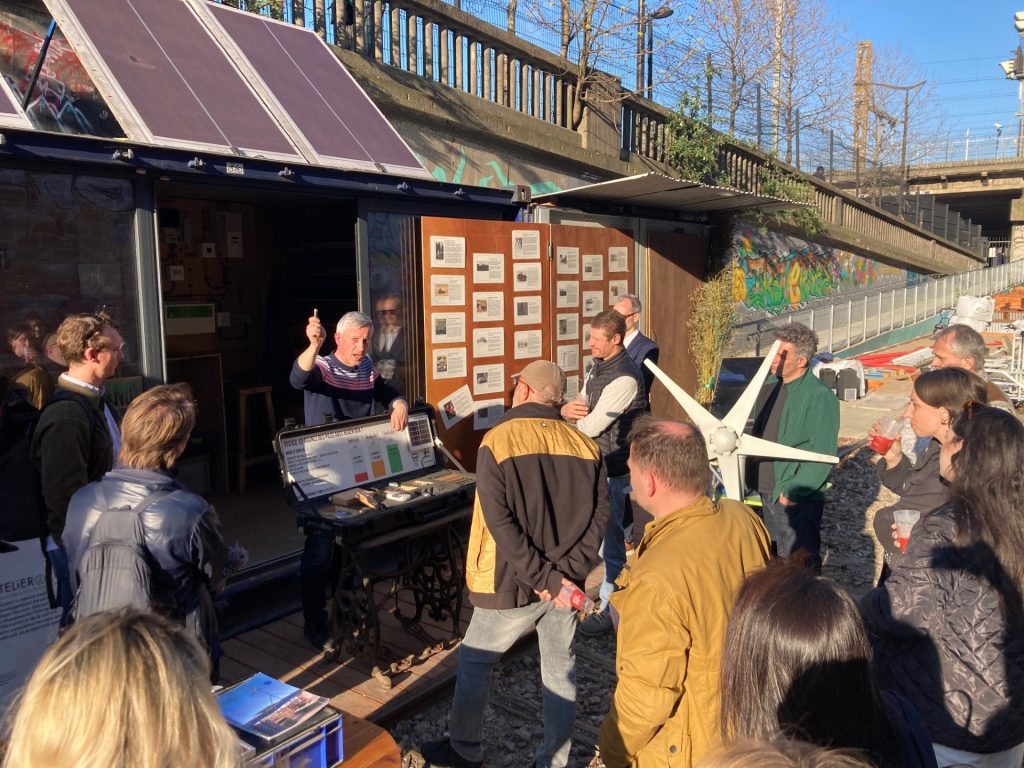
The energy transition must have a compelling story to inspire adoption and creative solutions. All who visit are encouraged to touch, deconstruct, rebuild, and run tests on our solar panels, two small wind turbines, an inverter, charging and safety systems, and battery banks. Transparency and education are central to our approach.
Can you tell us about some of your popular products and learning tools?
A foundational principle of Atelier 21 is marrying innovative energy products with compelling narratives. To democratize understanding and expand adoption, we posit sensory experience as an effective learning tool. One of our most successful tools is the Solar Sound System, which was initially developed in 1999 and can currently be powered by solar energy and stationary bikes equipped with generators.
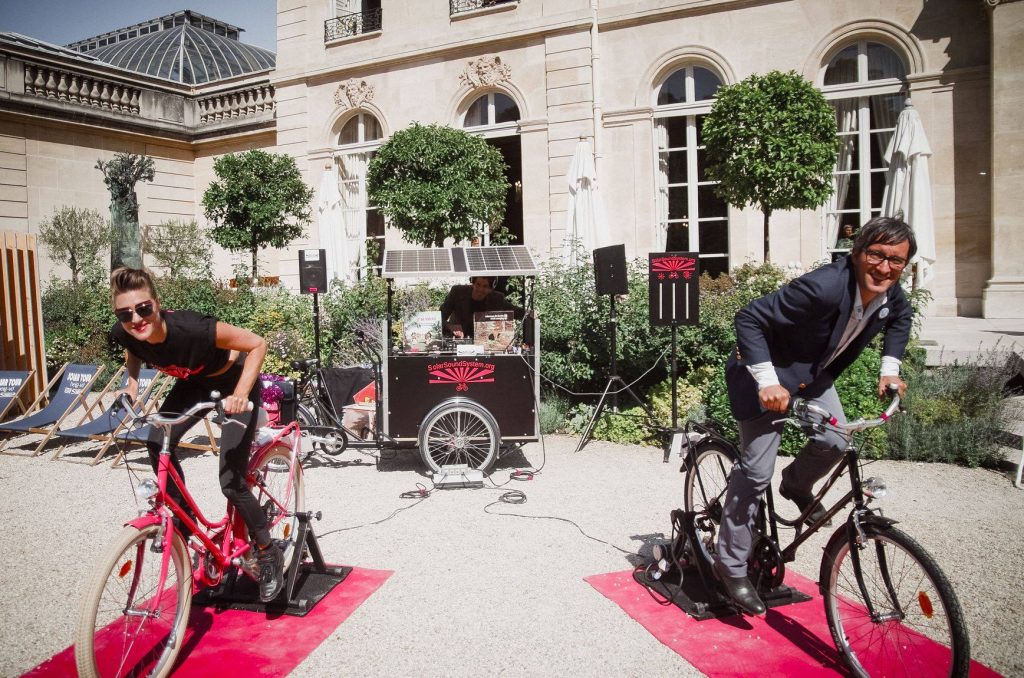
With this system, we host musical events, parties, and invite schools to bring their students for hands-on learning about solar energy. Children are able to plug in their devices and play their own music, often leading to dance parties and games. Further, we even export the system and its philosophy of learning about solar energy through engaging the senses and play to diverse contexts all over the world. Entire festivals and DJ sets are able to be powered by solar energy.
Beyond the sense of hearing, we have a solar oven and a warming system, highlighting the multifaceted applications of solar energy in the everyday via touch and taste. Cooking Swiss cheese while working in Switzerland, or allowing people to touch the warming system, we work to tailor their educational programmes to the audience to ensure unforgettable experiences. If some are left with a slightly burnt finger or able to eat delicious local cheeses, they will surely not forget the lessons about the applicability of solar energy. Playing to the senses allows us to effectively communicate to a wide variety of peoples and communities. We encourage learning by doing, where curiosity is sparked through exciting stories and narratives about the application of solar energy and energy alternatives.
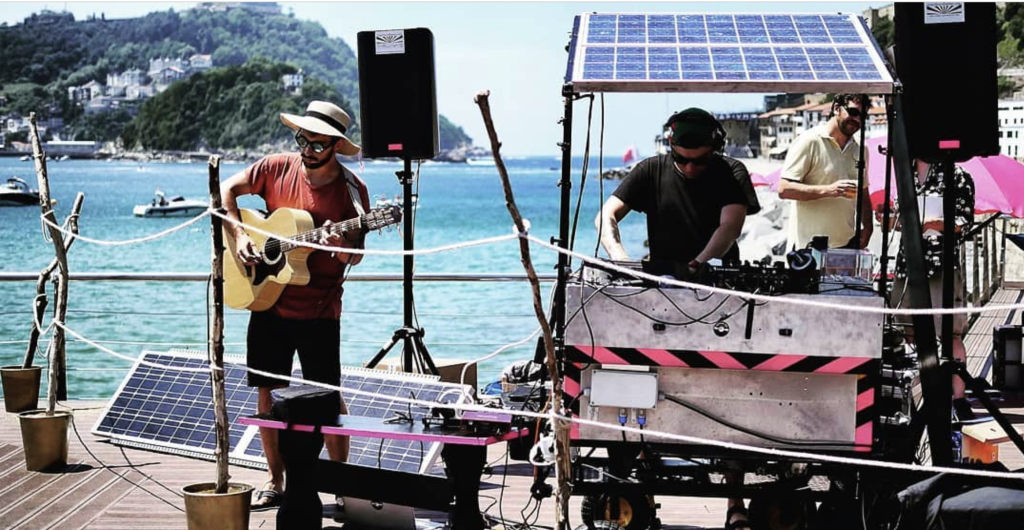
Can you tell us about your Paleo-Energetics research project?
One of our flagship research projects is Paleo-Energetics (Paléo-énergétique), an investigation into forgotten sustainable technologies. The project maintains timelines of historical inventions which engage with energy alternatives. This endeavor led to the publication of Retrofutur and four other books in French, English, and Japanese. All books are compilations of patents and innovation “gold nuggets” — from ingenious water systems to hydrogen cars— that could be adapted for today’s sustainable needs. This project seeks to inspire innovations which can work in concert with past developments. Expanding the scope of recycling and reuse to include theories and patents.
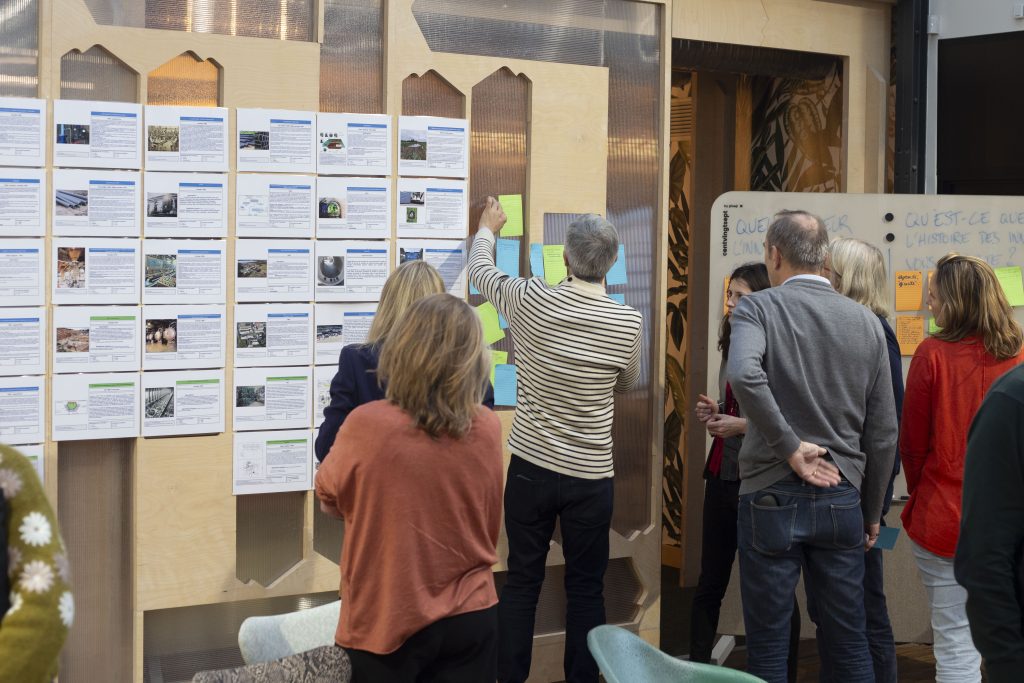
Additionally, we work with engineering schools and companies to harness Paleo-Energetics principles through activities and projects which both encourage engineers to resume or adapt older inventions and directly engage with senior colleagues about past practices. Often when experienced employees retire, valuable expertise and knowledge is lost or is assumed to be null due to its perceived antiqueness. With companies, we have created clubs where retirees and those about to retire can transfer their valuable knowledge to younger staff. In Switzerland, some companies have even brought retirees back to work alongside younger staff who lack specific know-how. Beyond direct transfers of knowledge, we developed an exhibit called Rétrofutur Museum based on our research on Paleo-Energetics. At Suez, a large French utility company specialising in water and water management, we brought the Rétrofutur Museum and co-created a project and exhibit which lined walls of their building with patents from the 1970s and 1980s.
Have you created any products based on Paleo-Energetics principles?
We applied the principles of Paleo-Energetics in a project on regenerative alkaline batteries as a means to reduce negative environmental impacts and waste. Our research found that producing one 25-gram alkaline battery represents about 145 grams of CO₂ emissions and nearly 200 litres of water. In France, around one billion alkaline batteries are sold each year and half of them end up in general waste, polluting water, soil, and air. In order to combat this unfortunate reality, we produced a product called the RegenBox. This device is able to recharge old alkaline batteries.
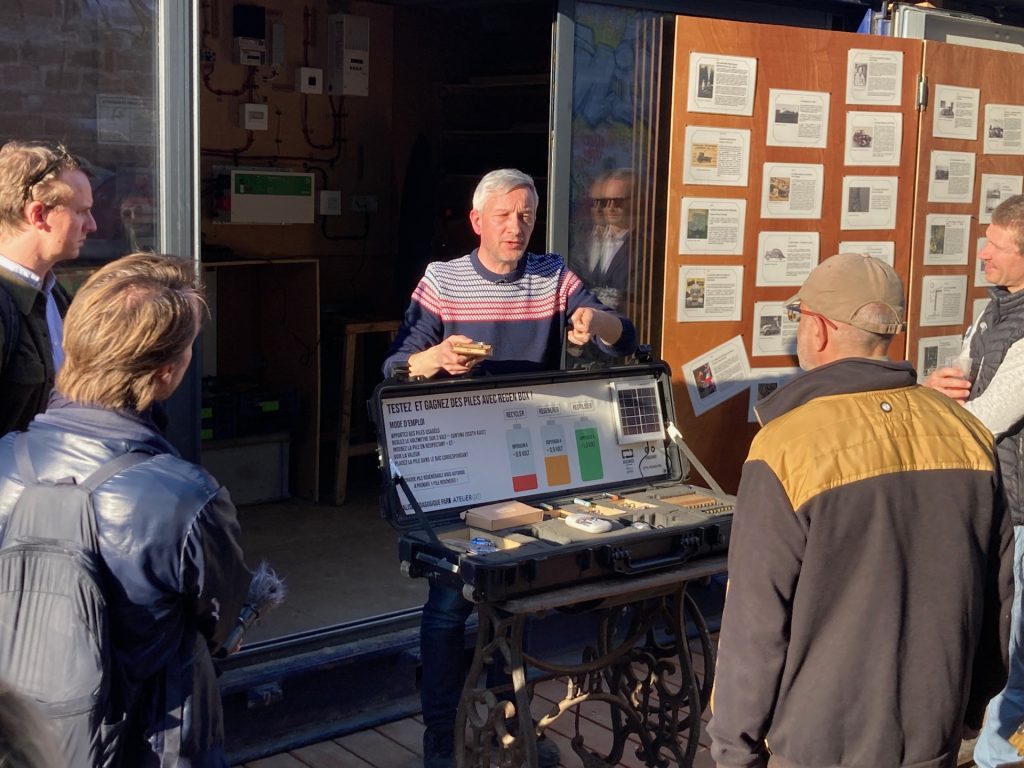
An excellent example of our Paleo-Energetics philosophy, the RegenBox plays off of a product first developed by the inventor of alkaline batteries in the 1970s. Working with engineers, fab labs, schools, and our own team, we tested every brand of alkaline battery on the market with their revived product. Our device worked. The RegenBox was reborn. Aligned with the Atelier 21 model, we created a sustainable solution to an environmental issue which can also function as a tactile learning tool to be used for educational programming. Through our research, we discovered that of the batteries found in recycling or waste bins, 1/3 are completely dead, 1/3 can be recharged using the RegenBox, and 1/3 are actually brand new. The RegenBox has widespread applicability and is a necessary product for a sustainable future.
Is there anything forthcoming that you are excited to share?
For a large-scale ecological and energy transition, more engineers will be needed. We believe it is essential to reach out to young people and expand the gendered engineering field to bring more women into the fold. We are currently co-producing a short video series on women in France who are part of the energy transition in the project titled Transitionneuses – Portraits de femmes engagées dans la transition écologique (TRANSITIONERS – Portraits of women engaged in ecological transition). These video portraits serve as both a documentary record and an educational tool, amplifying diverse voices and highlighting the critical role of women in shaping the future of energy.
More information, resources, and project details — many available in multiple languages — can be found at atelier21.org.

